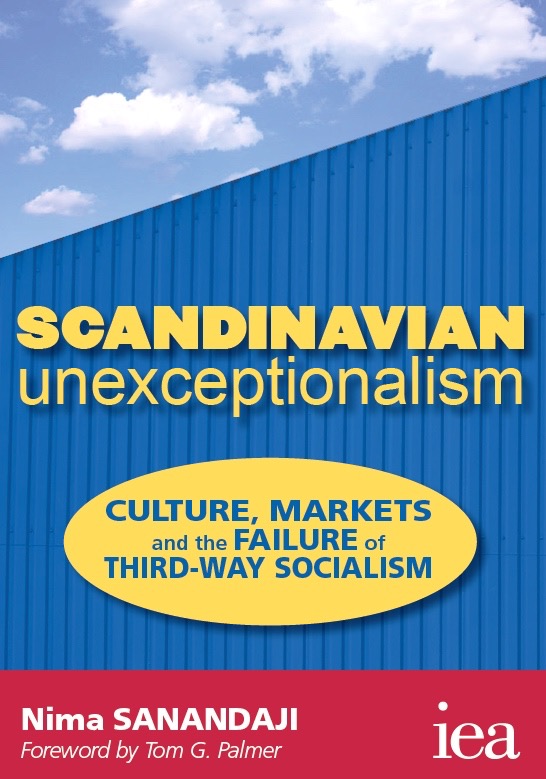Dismantling the Myth of Scandinavian Exceptionalism

Step aside capitalism, you’re washed up!
Or so it seems, if you take the words of your average socialist intellectual at face value.
To them, Scandinavian countries embody the anti-thesis of brutal capitalism — shiny images of economic prosperity and egalitarianism.
But is Scandinavia the socialist paradise that many progressives make it out to be?
Nima Sanandaji, author of Scandinavian Unexceptionalism (2015, London Publishing Partnership) would like to emphatically disagree. In his short but powerful work of 160 pages, Sanandaji demonstrates there is much more to the Scandinavian model than meets the eye.
Conventional narratives point to the lavish welfare states as the main engines of their prosperity. However, a closer look at this region’s history reveals a more nuanced picture.
Sanandaji does an excellent job detailing the economic history of Scandinavian countries, starting from the late 19th century up until modern times.
Contrary to popular belief, Scandinavian countries actually experienced numerous decades of free-market capitalism. This free-market period enabled them to accumulate capital and enjoy unprecedented levels of prosperity. Sanandaji uses his home country of Sweden as an example to illustrate this point:
Property rights, free markets and the rule of law combined with large numbers of well-educated engineers and entrepreneurs.… an environment in which Sweden enjoyed an unprecedented period of sustained and rapid economic development. In the hundred years following the market liberalisation of the late 19th century and the onset of industrialisation, Sweden experienced phenomenal economic growth … IKEA, Volvo, Tetra Pak, H&M, Ericsson and Alfa Laval were all founded during this period … aided by business-friendly economic policies and low taxes.

What makes Scandinavian Unexceptionalism even more intriguing is Sanandaji’s incorporation of culture in explaining the Nordic success stories.
High levels of social trust have been hallmarks of Scandinavian countries, which Sanandaji emphasizes in the following passage:
The homogeneous Nordic countries have adopted cultures with strong social cohesion, resulting in the highest levels of trust in the world … This is maintained when Scandinavians move abroad: among the US population those with Scandinavian origins have the highest levels of trust.
These social characteristics were more than random idiosyncrasies, they were part and parcel of a robust social fabric that facilitated Scandinavia’s initial economic success.
Even with the aforementioned factors in these countries’ favor, they could not avoid the inevitable consequences of embracing interventionist policies. The once impressive growth of the Scandinavian region started to become an afterthought by the 1970s, as economic stagnation and fiscal imbalances became the norm.
In response to these alarming indicators, countries like Sweden implemented a number of sensible reforms during the 1990s and 2000s like tax cuts and school choice, while others like Denmark liberalized their labor market to make it more competitive and flexible.
Succinct, yet powerful, Scandinavian Unexceptionalism does not disappoint. When former presidential candidates like Bernie Sanders are championing the Scandinavian model as an example for America to follow, this text’s relevancy cannot be overstated.
Longstanding myths die hard, but Scandinavian Unexceptionalism is a great first step in dismantling the myth of Scandinavian exceptionalism.








